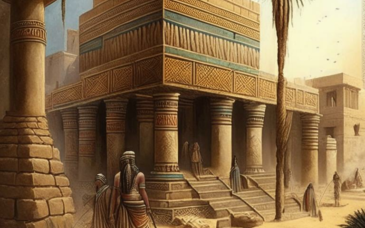Axum, also known as Aksum, was an ancient kingdom located in what is now Ethiopia and Eritrea. The civilization of Axum is believed to have emerged around the 4th century BCE and reached its peak between the 1st and 7th centuries AD. It is widely considered to be one of the most important and influential ancient cultures of the Horn of Africa.
One of the most distinctive features of the Axumite culture was its monumental architecture. The Axumites built impressive stone structures, including massive stelae, or obelisks, that still stand today. These stelae, some of which reach over 33 meters in height, were used as markers for burial sites, and their intricate carvings depict aspects of Axumite culture and religion.
Another important aspect of Axumite culture was its religion. The Axumites were followers of a blend of traditional African beliefs and Christianity. They believed in a pantheon of gods and goddesses, as well as the worship of the Ark of the Covenant, which they believed was kept in Axum. The Axumite kingdom was also one of the first to officially adopt Christianity, around the 4th century AD, which played a significant role in the spread of Christianity in the Horn of Africa.
Axum was also a major economic power in the ancient world, controlling trade routes across the Red Sea and Indian Ocean. They traded with the Roman, Byzantine and Persian empires, and controlled the production of gold, iron, and ivory. They also minted their own coinage, which spread far and wide, and served as a means of exchange.
Additionally, Axum is known for its script, the Ge'ez script, which is still used today in the liturgical language of the Ethiopian Orthodox Church.
In conclusion, the Axumite culture was a complex and influential civilization that played a significant role in the history of the Horn of Africa. Its impressive monumental architecture, unique religious beliefs, and economic power have left a lasting legacy, and many aspects of Axumite culture can still be seen in Ethiopia and Eritrea today. The Axumite culture is a testament to the rich and diverse history of the region and serves as an important reminder of the contributions of ancient Africa to the world.








